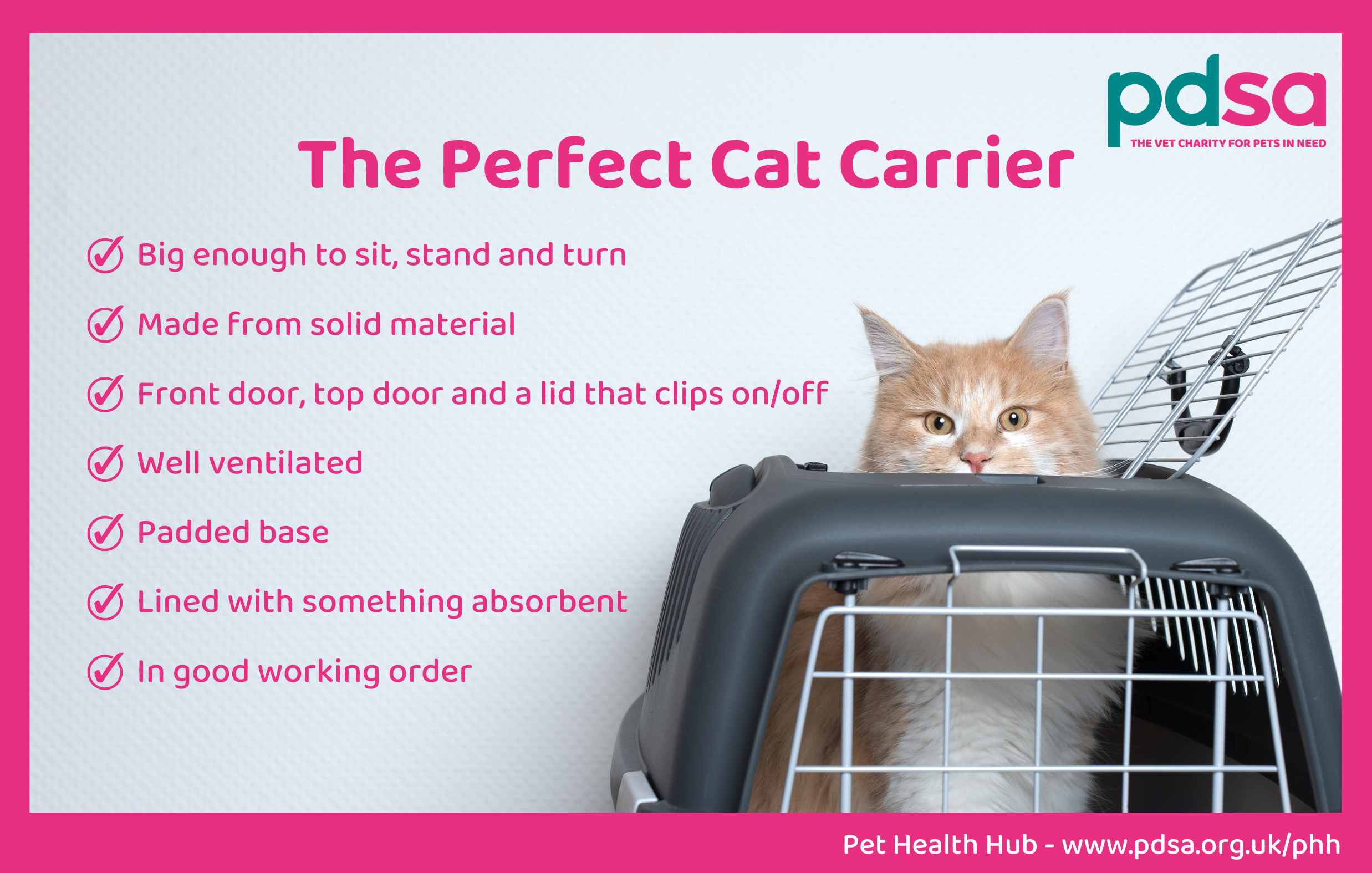How To Get Your Cat In A Carrier

Overview
- To get your cat happily walking into their carrier, you’ll need to convince them it’s a safe, comfortable, place to go.
- Start by choosing the right carrier, then follow our training steps below - take it slowly and use lots of rewards.
- We’ve also explained how to get your cat in a carrier in an emergency.

The perfect cat carrier should be:
- Big enough for your cat to stand up, turn around, and lie down.
- Made from solid material - cardboard carriers tend to be flimsy and fabric ones don’t make cats feel secure.
- Accessible via a front door, top door, and a lid that clips on and off.
- Well ventilated with openings on at least two sides to prevent overheating.
- Padded with a pillow or blanket, so your cat is warm, comfortable and can steady themselves when they’re being carried.
- Lined with something to absorb any toileting accidents (newspaper/ blankets/towels/puppy training pads).
- In good working condition – all clips and doors working, not tied together with string or cable ties because cats can be very determined to get out of a carrier when they’re scared.
 Video found at youtu.be/PZ4ozBBVswc
Video found at youtu.be/PZ4ozBBVswc
- Put a blanket and some pheromone spray in your carrier, and leave it somewhere your cat spends a lot of time – ideally all the time, but at least for a few weeks before travel.
- Once your cat is used to seeing their carrier, take the lid off and put treats inside it.
- Once they will happily go inside with the lid off, put the lid back on and encourage them in with more treats.
- Once they’re happy going inside with the lid on, try closing the door for a few seconds while they are inside (give them treats during and afterwards).
- Gradually increase the time they are shut in for, until they are happy to sit inside it for a couple of minutes.
- Once your cat is comfortable being shut in the carrier, start lifting the carrier for a few seconds and give them treats during and afterwards.
Top tips…
- Take each step really slowly and go back a step if they seem stressed at any point.
- Give your cat plenty of treats to keep them happy throughout their training.
- The whole training process is likely to take a number of training sessions, over at least a week or two.
Putting your cat into a carrier in an emergency
In an emergency, the best way to put your cat in a carrier is backwards.
- Put the carrier somewhere where it won’t move i.e., against a wall and put a blanket/pillow in it.
- Gently guide your cat in backwards/bum first.
- If you have a top opening carrier, lower them in bum first.
- If you are struggling, wrap them in a towel and back them in – you can leave the towel in the carrier with your cat.
- During transport, cover the carrier with a blanket to help your cat feel secure.
- Can both of my cats use the same carrier when I transport them?
- How long can a cat stay in a carrier?
- Should I cover my cat carrier with a blanket?
- How to put a cat carrier in the car
Can both of my cats use the same carrier when I transport them?
Ideally not. Travelling can be a very stressful experience, so even bonded cats may fall out if they are forced to share a small space.
How long can a cat stay in a carrier?
Being in a carrier is stressful for most cats, so it’s best to keep their time in it as short as possible. If they need to stay in it for more than a couple of hours you’ll need to offer them some food and water. It’s also best to cover it with a blanket to keep them calm (just check them regularly).
Should I cover my cat carrier with a blanket?
Yes, it will make your cat feel a lot more secure if their carrier is covered with a blanket while they’re travelling.
How to put a cat carrier in the car
When putting a cat carrier in the car you need to make sure it’s secured so it won’t move while you’re driving, and on a flat surface so your cat doesn’t slide to one end of it. Put the carrier on a back side seat (not the middle seat) and make sure it’s sitting as flat as possible, if it’s on a slant, use a towel to level it out. Plug the seatbelt in, put the chest section over the top, and the lap section around the front. Tighten the belt as much as possible, until you are happy the carrier won’t move when you go around corners or if you need to break suddenly.
Published: December 2022
Did you find this page useful?
Tell us more
Please note, our vets and nurses are unable to respond to questions via this form. If you are concerned about your pet’s health, please contact your vet directly.
Thank you for your feedback
Want to hear more about PDSA and get pet care tips from our vet experts?
Sign up to our e-newsletter
Written by vets and vet nurses. This advice is for UK pets only. Illustrations by Samantha Elmhurst.
